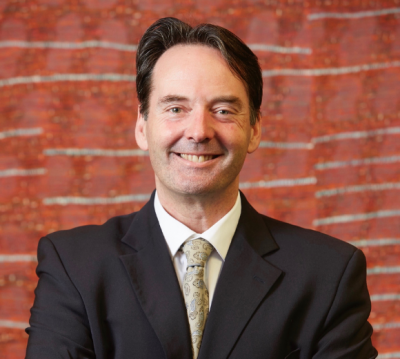An exciting discovery by Monash University scientists – including members of EMBL Australia’s leadership team, Professor Peter Currie and Associate Professor Mikaël Martino – may lead to faster recovery from muscle injury and wasting diseases.
When we tear a muscle, stem cells within it repair the problem. We can see this occurring not only in severe muscle wasting diseases such as muscular dystrophy and in war veterans who survive catastrophic limb injuries, but also in our day-to-day lives when we “pull” a muscle. When we age and become frail, we lose much of our muscle and our stem cells don’t seem to be able to work as well.
These muscle stem cells are invisible engines that drive the tissue’s growth and repair after such injuries. But growing these cells in the lab and then using them to therapeutically replace damaged muscle has been frustratingly difficult.
Researchers at the Australian Regenerative Medicine Institute (ARMI) at Monash University in Melbourne have discovered a factor that triggers these muscle stem cells to proliferate and heal. In a mouse model of severe muscle damage, injections of this naturally occurring protein led to the complete regeneration of muscle and the return of normal movement after severe muscle trauma.
The research led by Professor Peter Currie, Director of ARMI and an Australia-EMBL Partner Laboratory Head, was recently published in Nature.

The scientists studied the regeneration of skeletal muscle in zebrafish – fast becoming the go-to animal model for the study of stem cell regeneration because the fish are quick to reproduce, easier to experimentally manipulate, and share at least 70 percent of their genes with humans. It is also transparent, which allows the scientists to witness the actual regeneration in living muscle.
By studying the cells that migrated to a muscle injury in these fish, the scientists identified a group of immune cells, called macrophages, which appeared to have a role in triggering the muscle stem cells to regenerate.
“What we saw were macrophages literally cuddling the muscle stem cells, which then started to divide and proliferate. Once they started this process, the macrophage would move on and cuddle the next muscle stem cell, and pretty soon the wound would heal,” Professor Currie said.
Macrophages are the cells that flock to any injury or infection site in the body, removing debris and promoting healing.
“They are the clean up crew of the immune system,” Professor Currie said.
It has long been thought that two types of macrophages exist in the body: those that move to the injury rapidly and remove debris, and those that come in slower and stick around doing the longer term clean-up.
The research team, however, found that there were in fact eight genetically different types of macrophages in the injury site, and that one type, in particular, was the “cuddler”. Further investigation revealed that this affectionate macrophage released a substance called NAMPT. By removing these macrophages from the zebrafish and adding the NAMPT to the aquarium water the scientists found they could stimulate the muscle stem cells to grow and heal – effectively replacing the need for the macrophages.
Importantly, recent experiments placing a hydrogel patch containing NAMPT into a mouse model of severe muscle wasting led to what Professor Currie called “significant” replacement of the damaged muscle.
The researchers are now in discussions with a number of biotech companies about taking NAMPT to clinical trials for the use of this compound in the treatment of muscle disease and injury.
Read the full paper in Nature titled: Macrophages provide a transient muscle stem cell miche via NAMPT secretion. DOI: 10.1038/s41586-021-03199-7
This article is slightly adapted from the original, which appeared on Monash University’s news webpage, and has been reproduced with permission.